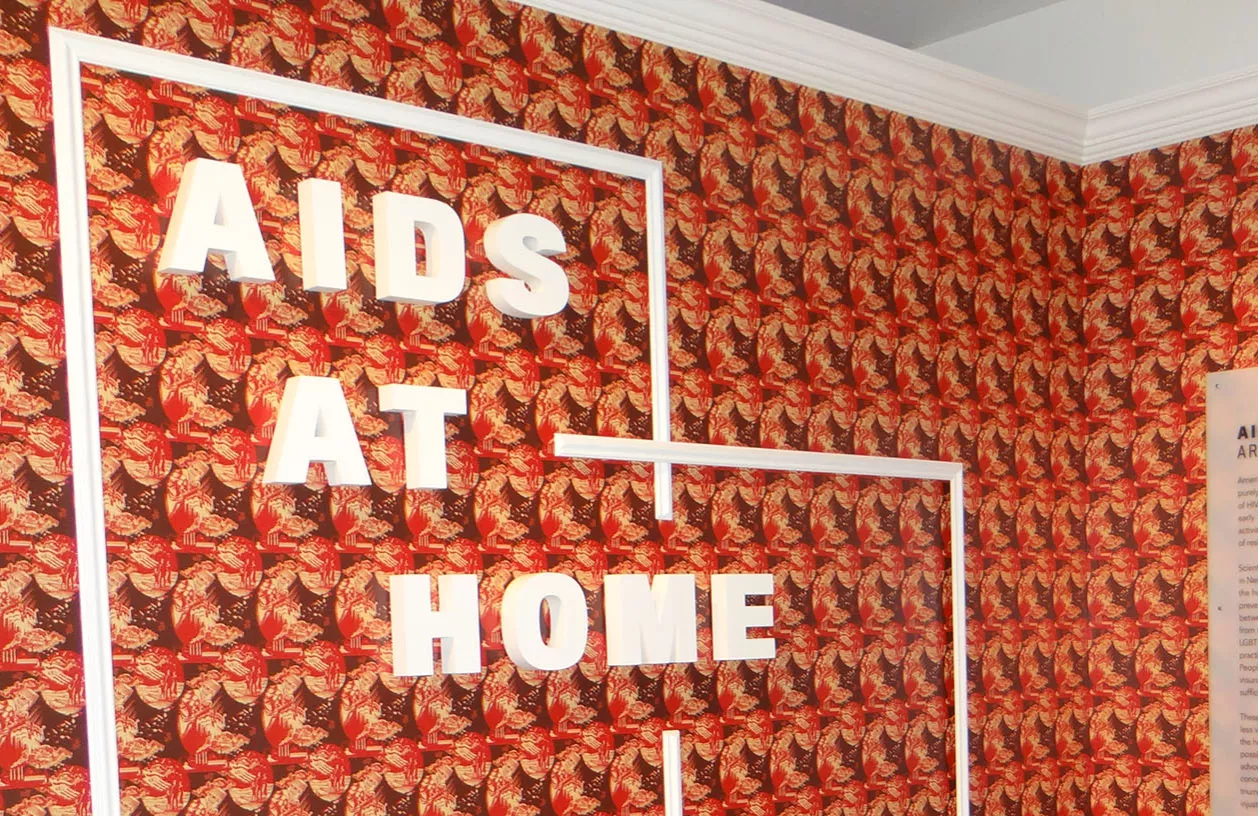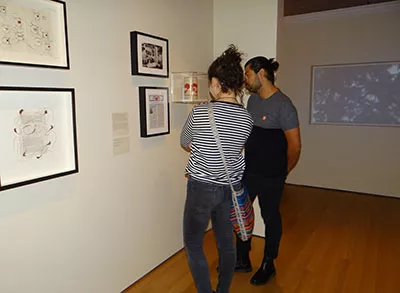
Students from the Bryn Mawr College History Department’s Queering Public History, Approaches to Historical Praxis, and Historical Imagination courses were among a group that visited the Museum of the City of New York to view the AIDS at Home: Art and Everyday Activism exhibit, curated by Visiting Assistant Professor Stephen Vider of Museum Studies.
History faculty members Anita Kurimay, Madhavi Kale, and Sharon Ullman, and Political Science faculty member Joel Schlosser were also among those in attendance for the Sept. 29 trip, which was sponsored by the Department of History, Museum Studies, the Dean's Office, and the Praxis office.
The exhibit explores the ways that artists and activists have mobilized the home and have redefined family in response to HIV/AIDS and its physical, emotional, and social effects from the 1980s to the present. Vider led students on a tour, giving personal accounts on his method of research and motivation for doing the project, as well as the successes and challenges he faced. This was a unique opportunity for history students to walk through an exhibit with a tour by the exhibit’s curator and consider the many facets of public history and the process of curating an exhibit.
The exhibit included many artifacts and personal art that showcased the difficulties of coping with AIDS and caring for ailing people. Much of the art and ephemera showcased were from activists who used the space of home and reimagined family and domesticity, creating home space as a space for activism, with much of the art and oral histories recounting the difficulty of finding affordable and humane housing, which led many to deal with homelessness. The exhibit space was designed to mirror that of the domestic space of East Village homes with detailed molding, wall colors and wallpaper, which served the purpose of invoking the themes of family and domesticity and the self-determination of functional families without state interference.
Students were then treated to a panel with some of the artists whose work is presented in the exhibit, including Juanita Szczepanski, Eric Rhein, Lori Grinker, Luna Luis Ortiz, and T De Long. The artists spoke about their entries and those who influenced them to participate in the exhibit, with artist Ortiz describing his photography series as a visual diary in its beginnings, his main wish being to leave behind a remembrance for his family since he had been HIV positive since the 1990s. The artists highlighted the importance and the bravery that it took to create this art and record these stories during a time of misunderstanding around HIV/AIDS.
History at Bryn Mawr is about questioning and explaining how the past has been constructed, understood, and made into what we call "history." Courses challenge students to actively participate in interpreting and making history, rather than merely reading and reflecting about the past. For more information about the History Department and major, contact Senior Representative Azalia Sprecher Hidalgo.
